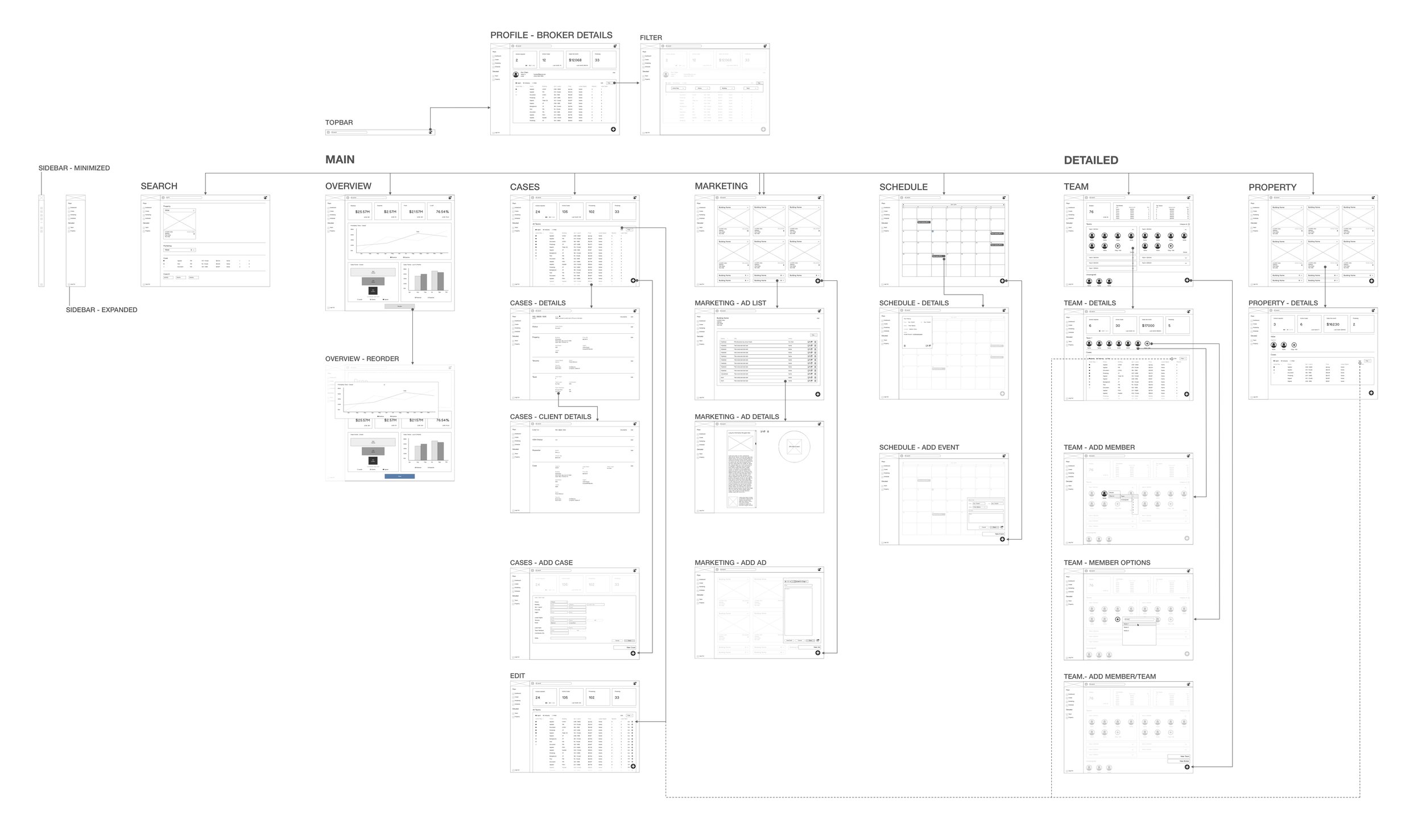EasyRent
Internal Dashboard: An Evolution of Organization
Product | UX | UI | Responsive Web | Dashboard
In 2016 there was an idea, to create a brokerage company sole aimed at international students coming to New York City to study, and their needs for rental apartments. For 2 years it focused on just that, and captured a market share of that audience that allowed the company to grow. And grow it did. However its organizational debt began to pile up. This project aims to fix that.
Designed throughout the year 2018, this is an expanded look at the design and development of EasyRent’s internal dashboard. The idea was to create an internal organization system to replace and evolve its existing system: excel sheets and email chains. Have a look.
INtroduction
EasyRent’s exclusive target audience of Chinese international students who come here to study, but also need a place to stay is a gigantic market. Initial client acquisition is done solely through the mega-popular social app, WeChat. WeChat being one of three pillars of the company, the second being excel sheets for any and all data records coming through, such as cases, client info, building info, etc. The third pillar is email, as in all documents and necessary client information sent to buildings for backgrounds and such, are only kept organized through email chains.
The goal of this project is not to replace WeChat, but to be the organizational pillar of EasyRent, consolidating both the excel sheets and email chains, and providing a one-stop-shop for both the company C-Level and regular employees to find everything they need in one dashboard, other than clients of course.
The process of research, prototyping, design and validation. One interesting note is that during research, we followed and observed a day-to-day for a broker, taking note of their pain points, from clients not knowing what they want, to having to flip through several hundred WeChat groups to find who was whose future roommate.
After interviewing and observing the brokers’ process, we began to formulate the persona, their user stories from an empathetic point of view, and narrowed down a list of key features that would make the brokers’ lives easier, starting with initial hand drawn sketches.
One of the main goals of the project were to be able to organize these WeChat group chats into organized lists that can be searched and filtered. As shown below, this is from a real broker’s chats.
The “landing” page that contains all chats, including tenants private conversations, team chats, company chats, etc.
Ads posted within chats, no way to search, ads need to be rewritten everytime
The searched view, and even then it is hard to distinguish and organize each listing.
Ads in a timeline, still disorganized and impossible to search
User stories were iterated upon from further discoveries of pain points, and opportunities in the form of features were ideated.
A site flow of the dashboard was created from the above research. The users of the tool was split into 2 distinct categories, C-Level executives who wish to see the entire picture, including company revenues, timelines, sales trends, being able to assign commission plans, assign teammembers, etc. The other being ground level brokers, who does not have access to those mentioned above but does have a personal performance portal that encourages teamwork and growth.
design and Wireframes
After further testing and iterations, high fidelity wireframes were created to help guide the design process towards the next steps.
UI design for MVP
Final design deliverables, with both light and night modes.
Validation & Conclusion
From interviews, observation and testing, the Broker page and the Client page were the most visited by almost 16 times. This ultimately led to the decision to specifically put Brokers, Buildings and Clients to its own separate section on the Side Navigation to reduce clicks to get to it and convenience.
The entire system is designed with customizable cards in mind, the dashboard is of course responsive, and each card or card type can be dragged and dropped around the page, with resizing coming as a backlogged feature. As the system is divided into 2 separate user groups, C-Level and normal employees, some functions are only available to C-Levels.
The marketing tab is all about composing ads for export directly into WeChat, where it is then posted. All documents from buildings and clients are accessible through the portal, as well as any email notifications. This means that other than WeChat, this is the only other system that most of the company needs. All data entered into this portal is automatically entered into spreadsheets, that raw data can of course be accessed.
The performance tabs are made to encourage and empower the company and individual brokers to track their progress, commission, and improve teamwork and communication by clearly presenting all statistics about a case, across all teams.
Future features that are backlogged numerous, and would make the brokers’ lives much easier. From direct importing WeChat groups into the dashboard via their APIs (which would be a major feature), to detailed performance analysis and forecasting, to importing profile pics from WeChat and showing them in the tenant lists.
Of course the design is not finished, with features coming soon down the pipeline. That being said I believe that no design is ever truly finished, it is a collaborative, iterative process that changes with time and trends.























